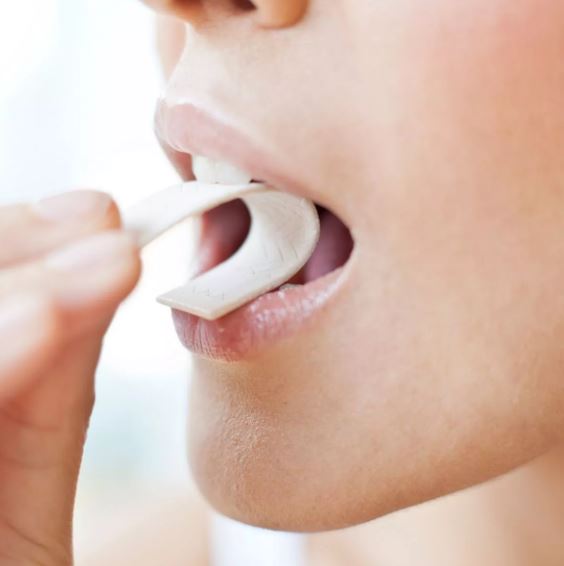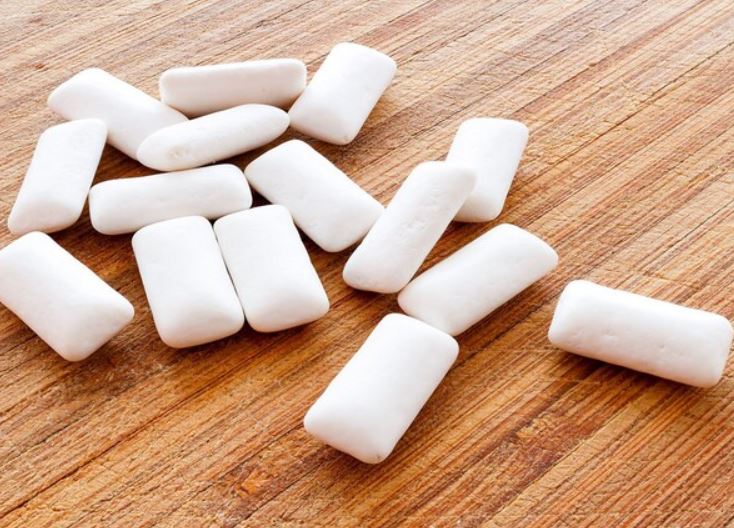What is chewing gum?
Chewing gum, in its simplest definition, is a soft, cohesive substance that is designed to be chewed but not swallowed.
Its origins date back thousands of years, with ancient civilizations using various natural substances like tree resin or sap for chewing purposes.

Fast forward to the modern era, and chewing gum has evolved into a ubiquitous treat enjoyed by people of all ages.
Common Ingredients in Chewing Gum
Gum Base
At the heart of chewing gum lies the gum base, a crucial component responsible for its chewy texture.
Gum bases can vary widely in composition, but they typically include natural or synthetic elastomers, resins, plasticizers, and waxes.
These ingredients provide the elasticity and malleability that make gum enjoyable to chew.
Sweeteners

To satisfy our sweet tooth, chewing gum contains sweeteners to enhance its flavor.
Traditional gum often used sugar as the primary sweetening agent, but with increasing concerns about dental health and sugar consumption, many manufacturers now offer sugar-free options.
These alternatives utilize artificial sweeteners like aspartame, sucralose, or xylitol to provide sweetness without the calories.
Flavorings
No chewing gum experience would be complete without a burst of flavor.
Whether it's the classic peppermint, fruity delights, or exotic blends, flavorings play a crucial role in enhancing the sensory experience of chewing gum.
Natural and artificial flavorings are used to create a wide array of tastes, ensuring there's something to suit every palate.
Softeners

Ever wonder why chewing gum remains soft and pliable even after prolonged chewing?
Softeners, also known as plasticizers, are responsible for maintaining the gum's flexibility and preventing it from becoming brittle.
Common softeners include glycerin, vegetable oil, and lecithin, which help keep the gum chewable for longer periods.
Manufacturing Process
Now that we've explored the key ingredients, let's take a behind-the-scenes look at how chewing gum is manufactured.
Mixing the Ingredients

The journey begins with the meticulous mixing of gum base, sweeteners, and flavorings.
Manufacturers carefully weigh and blend these ingredients to achieve the desired taste, texture, and consistency.
This process requires precision to ensure a uniform distribution of flavors and additives throughout the gum mass.
Kneading and Heating
Once the ingredients are thoroughly mixed, the gum mass undergoes kneading and heating to activate its elasticity.
This step is crucial for developing the gum's characteristic chewiness and ensuring that it retains its shape during packaging and distribution.
Temperature control is critical during this stage to prevent overheating, which could compromise the quality of the final product.

Shaping and Packaging
With the gum mass primed and ready, it's time to give it shape.
Whether it's molded into sticks, balls, or tablets, the gum is formed into its final presentation before being packaged for retail sale.
Packaging materials may vary, but they must provide adequate protection against moisture, air, and other external factors that could affect the gum's quality and freshness.
Are chewing gum ingredients safe?

As consumers, it's natural to question the safety of the products we consume, and chewing gum is no exception. Let's address some common concerns and considerations regarding the safety of chewing gum ingredients.
Regulation of chewing gum ingredients
The production and sale of chewing gum are subject to stringent regulations and oversight by government agencies such as the Food and Drug Administration (FDA) in the United States. These regulations dictate the types and quantities of ingredients that can be used in chewing gum formulations, ensuring that products are safe for consumption.
Health concerns associated with certain ingredients
Sugar and dental health
Traditional chewing gums containing sugar can contribute to dental decay if consumed excessively.

Bacteria in the mouth feed on sugar residues from gum, producing acids that erode tooth enamel over time.
To mitigate this risk, dentists recommend opting for sugar-free chewing gum or practicing good oral hygiene habits after chewing sugary gum.
Artificial sweeteners and controversies
Artificial sweeteners like aspartame and sucralose have been the subject of debate regarding their safety and potential health effects.
While extensive research has been conducted to assess their safety, some individuals may experience adverse reactions or sensitivities to these additives.
Safety measures taken by manufacturers
In response to consumer demand for safer and more natural products, many chewing gum manufacturers have taken proactive steps to reformulate their products.

This includes using alternative sweeteners, eliminating artificial flavors and colors, and enhancing transparency about ingredient sourcing and processing.
Environmental impact of chewing gum
Contrary to popular belief, chewing gum is not biodegradable in the same way that natural materials like fruit or leaves are.
Most chewing gums are made from synthetic polymers that resist breakdown by environmental processes.
As a result, discarded gum can persist in the environment for years, contributing to litter and pollution.
Improper disposal of chewing gum poses challenges for waste management and environmental conservation efforts.
When gum is discarded on sidewalks, streets, or public spaces, it can accumulate over time, creating unsightly messes and sanitation issues.
Innovative solutions to reduce environmental impact
Recognizing the need for sustainable solutions, researchers and entrepreneurs are exploring innovative approaches to address the environmental impact of chewing gum.
This includes developing biodegradable gum alternatives made from natural ingredients like chicle or plant-based polymers.






